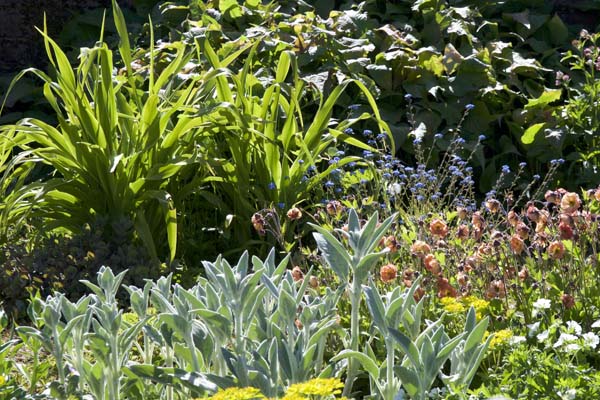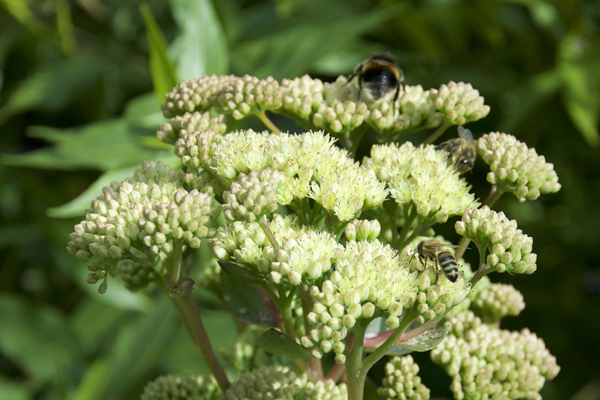Persicaria
(Bistort or Knotweed) Persicaria are handsome, carefree plants that can be divided into two - ones that are big and ones that are small. The biggest will grow to 180cm high, the shortest to just 30cm.
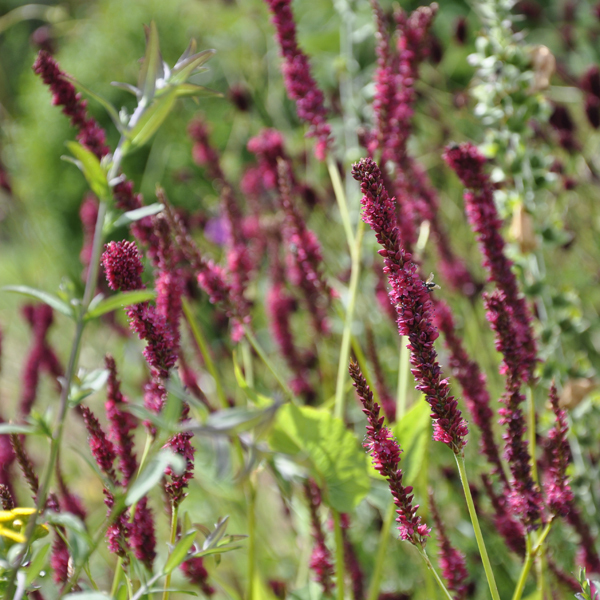
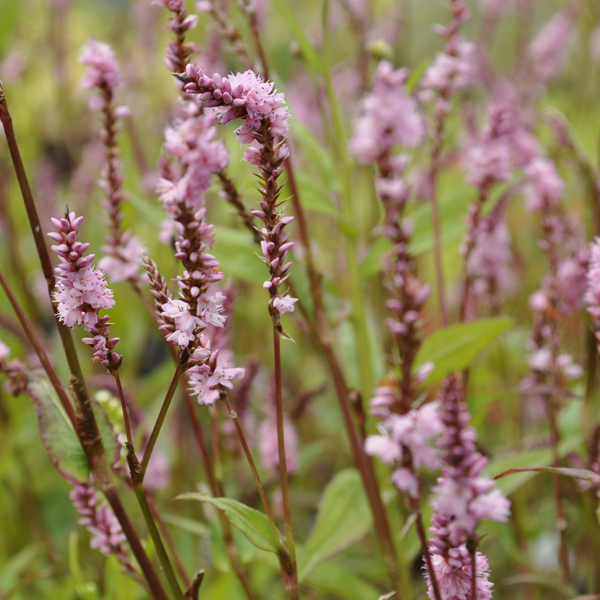
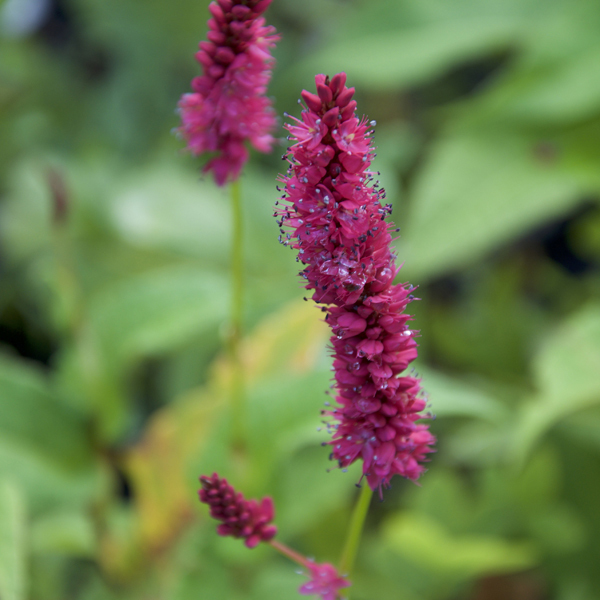
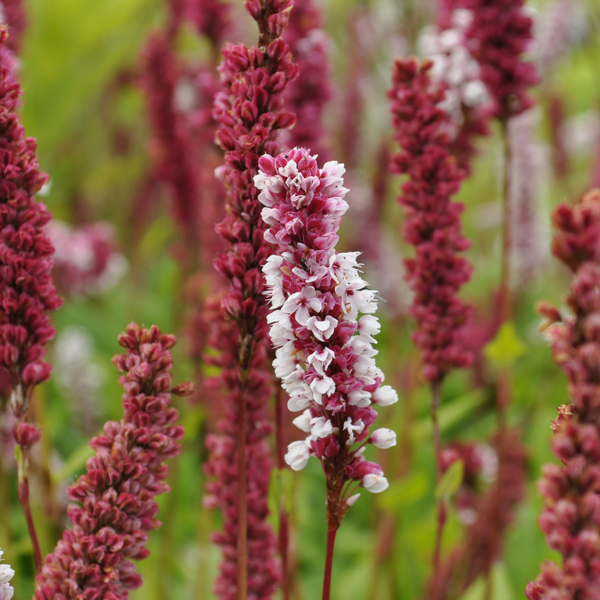
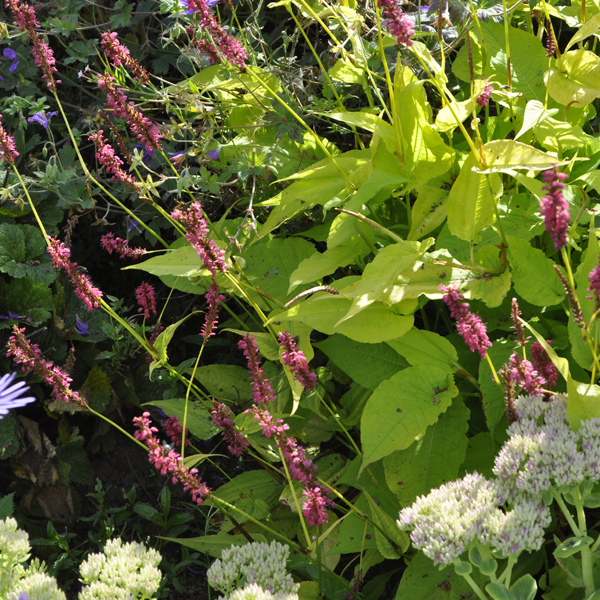
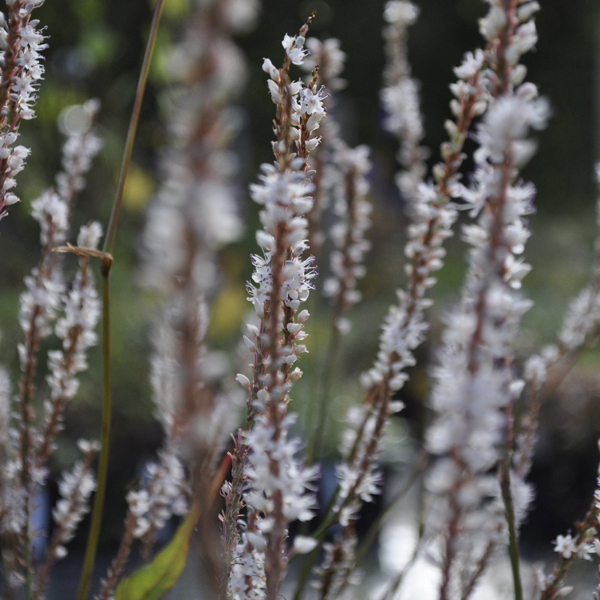

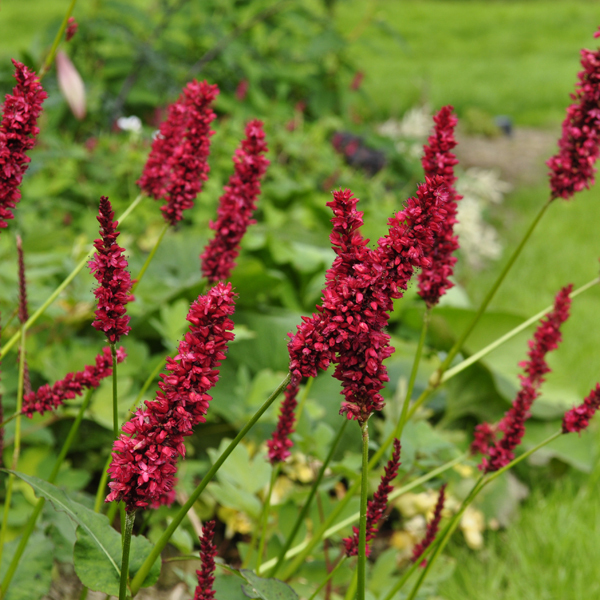
Top left to right: Persicaria amplexicaulis 'Amethyst', Perscaria amplexicaulis 'Pink Elephant', Persicaria dschawachishwilii, Persicaria affinis 'Darjeeling Red'
Bottom left to right: Persicaria amplexicaulis 'Golden Arrow', Perscaria amplexicaulis 'Alba', Perscaria amplexicaulis 'Dikke Floskes', Perscaria amplexicaulis 'Fat Domino'
Persicaria flowers & leaves
The tiny, round flowers open from bracts that are a different colour to the tiny petals. They are carried so thickly up slender stems that they create long spikes. Some as slender as a thread of beads, some are fat and poker-like. All are carried on slender stems with some small leaf that emerge from relatively large, oval leaves that are usually mid-green and often turn lovely tints of red in autumn. While the majority of varieties bloom from July to October, Persicaria bistorta flowers in late spring.
Why grow Persicaria
Bees as well as other flying insects, absolutely adore Persicaria, especially in the latter part of the summer. I have discovered that the flowers are great for cutting. The only draw back is that the tiny individual flowers will drop quickly, and although untidy, they make very little mess.
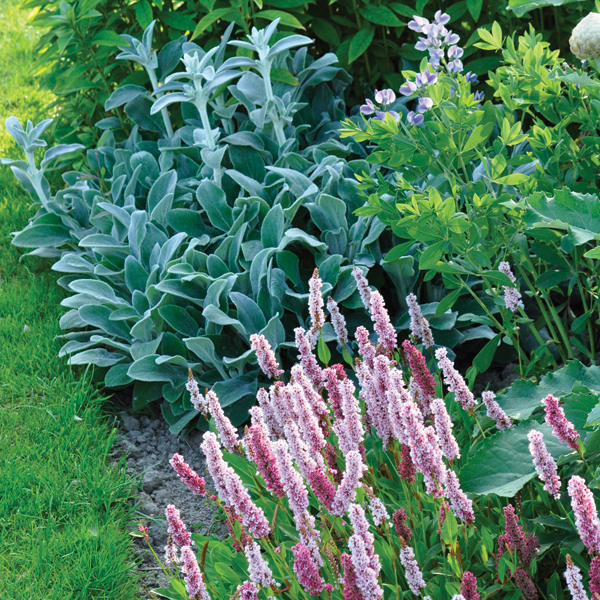
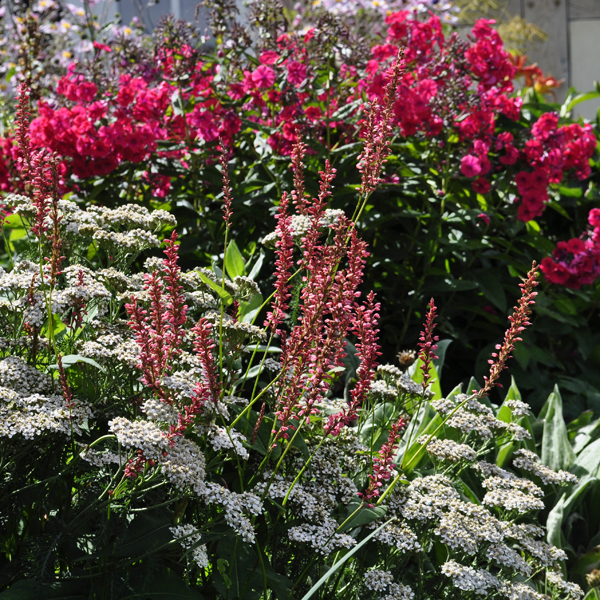

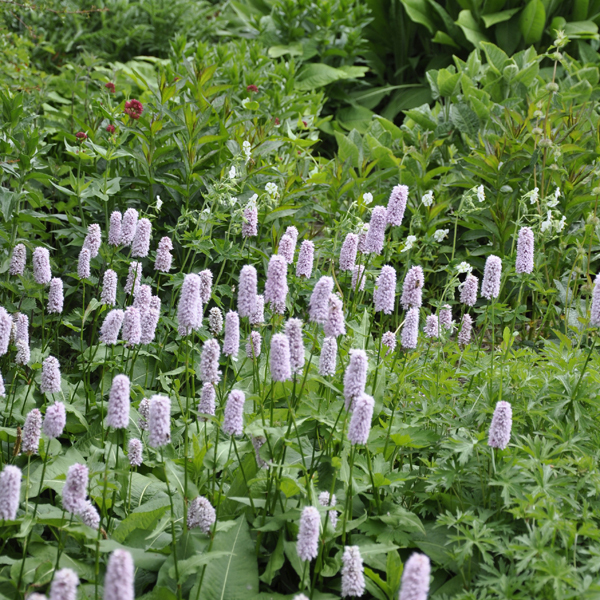

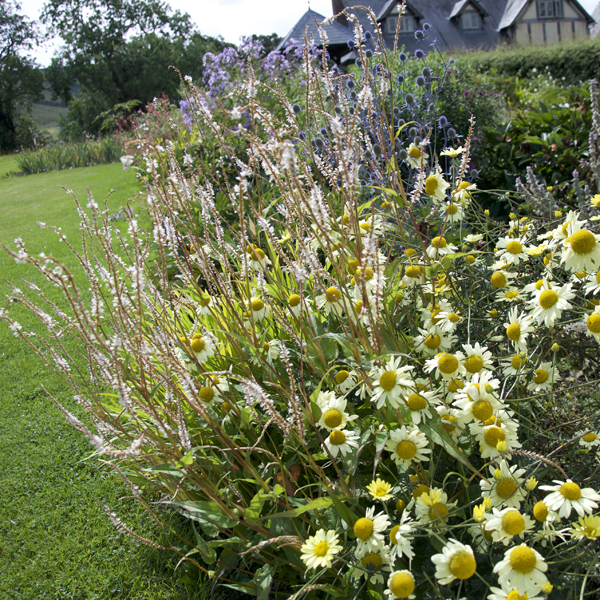
Top left to right: Persicaria affinis 'Superba' with Stachys byzantina 'Silver Carpet', Perscaria amplexicaulis 'Orange Field', PPerscaria amplexicaulis 'Alba', Persicaria bistorta 'Superba'
Bottom left to right: Persicaria amplexicaulis 'Joe and Guido', Perscaria amplexicaulis 'White Eastfield' with Anthemis 'E. C. Buxton'
Persicarias In The Garden
A big change (besides the addition of lots of lovely colours), in 2021 the RHS decided to rebrand Persicaria by name. This amuses me because when I started in horticulture in the early 1980s the plants now known as Persicaria were called Polygonum. Today all the Persicaria we list have been renamed Bistorta. For the time being these wonderful plants will stay under the name.
Large Persicaria
In my garden I grow larger Persicaria, which are those with amplexicaulis in the name and Persicaria polymorpha, in borders at least 120cm wide. This allows other perennials to be included and gives enough ‘run’ room for the Persicaria to sit comfortably amongst the companions. In a shallower bed makes them look squashed. Phloxes, heleniums, echinaceas and anything bushy look great with the bigger Persicarias, and as the slender flowers are dispersed evenly across the clump, other plants sitting behind the clump will be easy to see. In recent years many new varieties have been added to the horticultural lists, many of which come from Belgian breeder, Chris Ghyselen.
Low growing Persicaria
Shorter varieties are perfect for the front of a border, and blend happily with other short perennials including Stachys byzantina and short types of Geraniums.
Where to grow Persicarias
Although the preferred position for Persicarias is a soil that stays moist, they are easy to grow in any situation that stays cool, whether it is clay or sand but they don’t like hot, dry soil. They are equally as happy in a sunny or lightly shaded situation, the sort you find along the edges of trees where they only get sun for a part of the day, or the sunlight is dappled by over head trees. Be careful in this location because, due to tree or shrub roots, the soil can dry out. Persicaria bistorta types can be grown in soil that remains quite damp throughout the year.
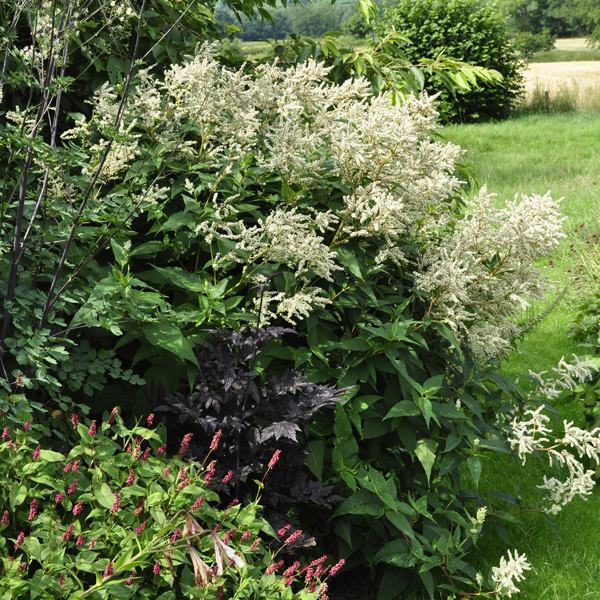
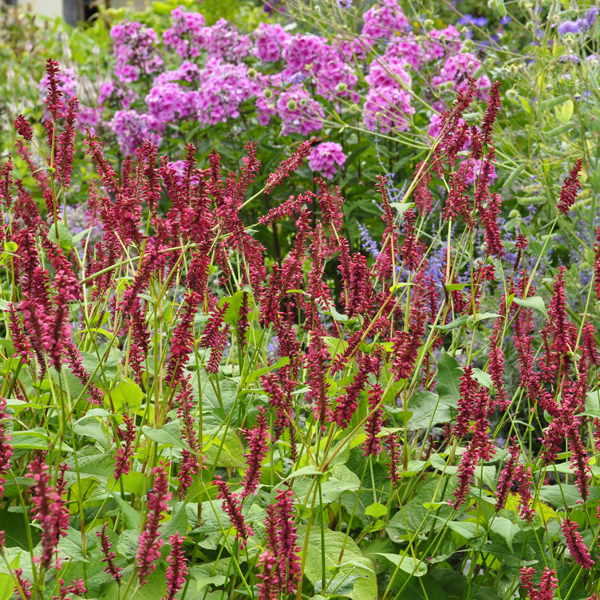
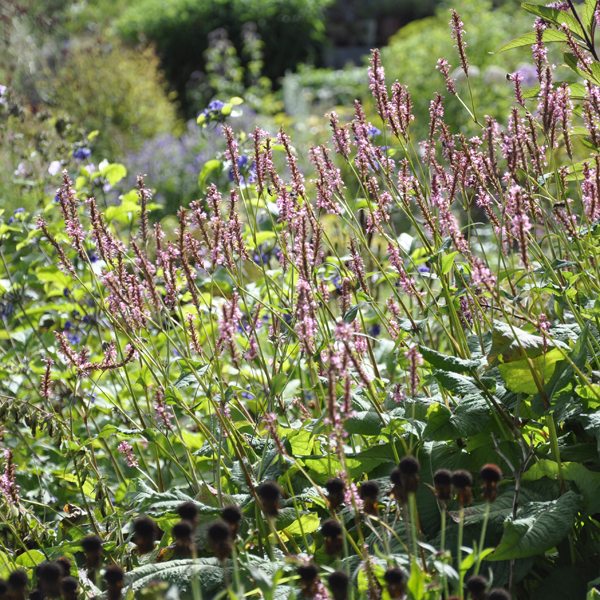
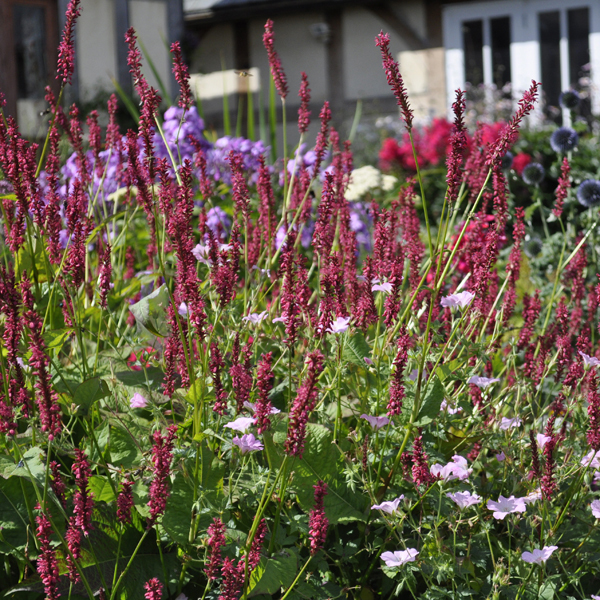
Left to right: Persicaria polymorpha, Persicaria amplexicaulis 'Firetail', Persicaria amplexicaulis 'Rosea', Persicaria amplexicaulis 'Taurus',
How To Care For Persicaria
After a few hearty frosts the leaves and stems of Persicaria amplexicaulis types will collapse into a heaps of brown that provides over-wintering insects (such as ladybirds) with cover. However tidier, less rushed gardeners might like to remove the foliage once the leaves turn brown. Any earlier and you might miss the lovely autumn colours of the leaves. I remove old foliage before new leaves start to shoot in spring.
Because they are large plants, with long rhizomes, it is a good idea to dig them up and divide them every few years as it can be more difficult task the bigger they get. This can be done any time after the foliage has died down. If they are left to get too large I reduce the size of the plant by digging clumps of rhizomes our around the whole plant. This seems to reinvigorate the whole clump. When happy in the right soil Persicaria bistorta can also be a runner, creeping between other plants.
Over winter Persicaria affinis types tend to leave a woven matt of stems that bear a few leaves. In spring new leaves will sprout from the stems, but not always on all the stems, which can make them look untidy. I tend to cut all the stems (which will root along the ground) back to the main plant. The new shoots which appear will then be neater and fresher.
Persicarias Are Good with
Bigger Persicarias look good with larger perennials that can cope with the robust nature of these plants. Smaller ones are ideal with Stachys byzantina. All are great for covering the ground to prevent weeds.
